Henry Engineering founder Hank Landsberg wrote in after reading the Workbench column where we showed the Sparkos “discrete ICs.” A number of years ago, Hank built an audio console based on OpAmp Labs plug-in amplifier modules that were popular in the early 1970s. Old-timers may remember them.
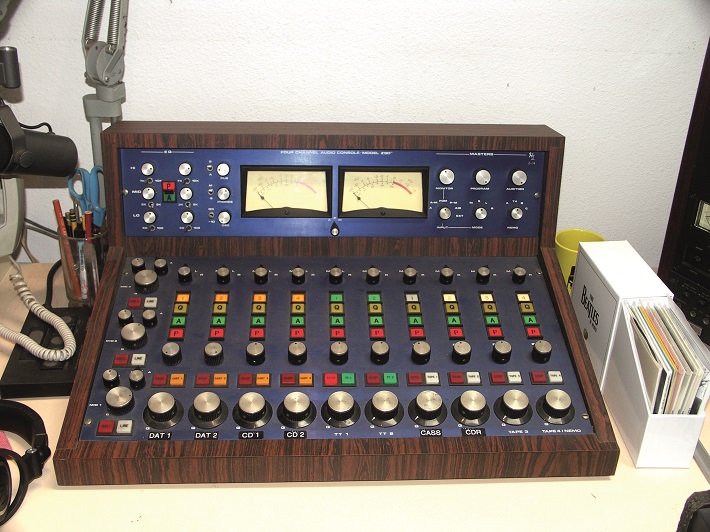
Hank’s console, pictured in Fig. 1, was actually a smaller version of the boards that he designed and built for Drake-Chenault in 1977. Both designs were built using OpAmp Labs plug-in amplifier modules.
Seen lined up inside the console in Fig. 2 (the cylindrical grey “cans”), these modules were made up of discrete parts, which plugged into an octal tube socket. There were dozens of versions, ideal for anyone who wanted to build their own audio gear: mic preamps, equalizers, mixing consoles, monitor amps, etc.
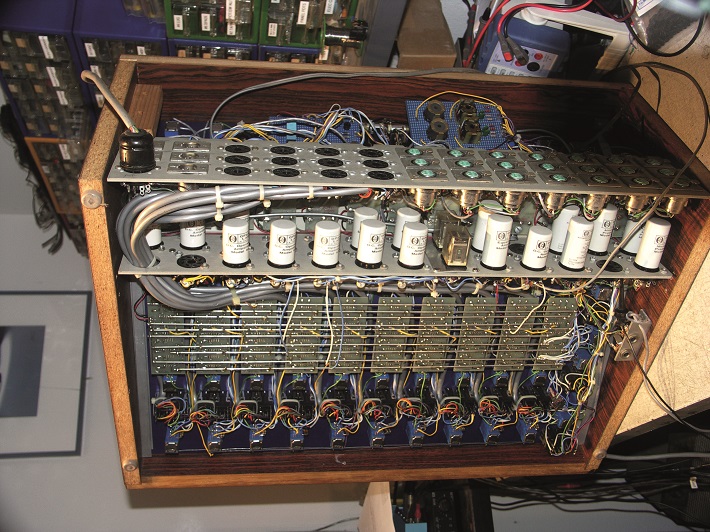
What made them particularly attractive was the price; they were inexpensive at $35 each, and convenient. Using the OpAmp Labs plug-in modules eliminated the need to make your own PC boards, and simplified construction of home-brew audio gear. The modules continue to be sold; see www.opamplabs.com.
Hank reports that after 30 years, the modules in his console started to fail. So he built a “retro-fit” replacement, similar to the Sparkos stuff reported in our 5/13 column. OpAmp Labs has never disclosed what circuitry was actually in their modules, and since they’re “potted” and sealed with epoxy, it’s impossible to know what components were actually used.
Hank’s “retro-fit” amplifier would be compatible with the OpAmp units, so he could replace those with his own circuitry. Since the OpAmp units use the “octal” or eight-pin base, Hank’s replacement did too, and is seen compared with the OpAmp Labs module in Fig. 3.
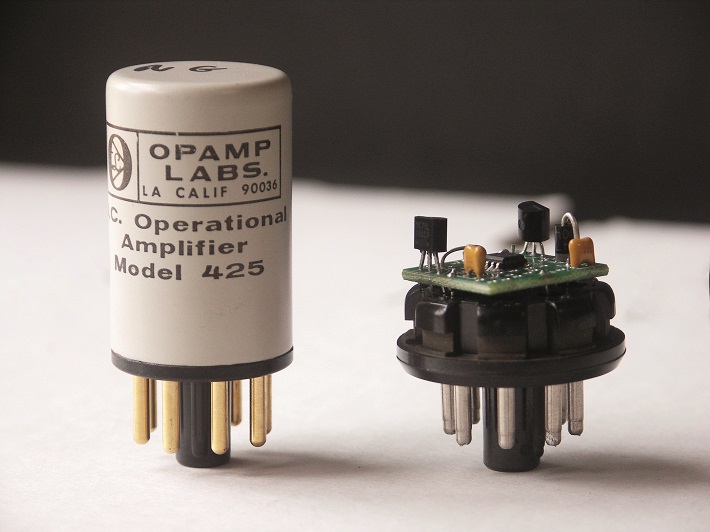
By using surface-mount technology components, Hank was able to put the whole amplifier on a PC board about the size of a postage stamp, and mount that on the top of an octal plug. Hank selected the Texas Instruments OPA1612 dual-opamp IC, and included 15VDC voltage regulators on each PC board.
He rebuilt the console with about 15 of these home-brewed modules. Fig. 4 shows the finished result. With some careful gain-structure engineering, Hank was able to eliminate all of the coupling capacitors in the circuitry, yielding frequency response that is (literally) flat from DC to about 30 kHz, with very low noise and distortion.
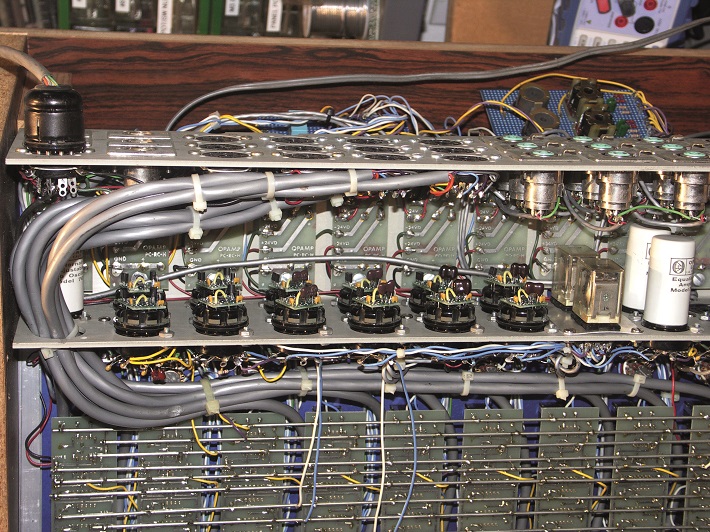
Thanks to the availability of small-quantity PC board production, the cost to produce a few dozen of these modules was relatively low. And Hank is sure they’ll be working just fine another 30 years from now!
Want to see what’s new at Henry Engineering? Head to Hank’s fresh new website at www.henryeng.com.
* * *
Like most of us in this business, our career started with a dream, maybe mimicking DJs as you played 45s on your older sister’s record player. Perhaps your inquisitiveness lured you into taking things apart — funny how they never got completely re-assembled!
For me, it was growing up in the Washington, D.C., suburbs and listening to the top 40 powerhouse 1390 WEAM, though I also took things apart that never got reassembled properly.
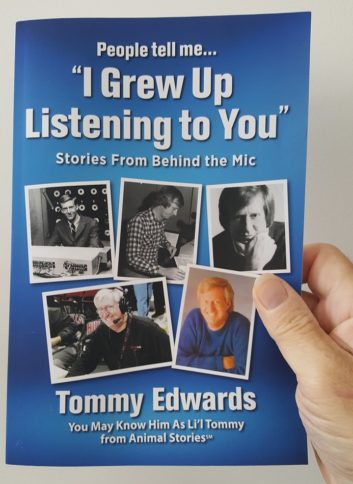
One of the familiar voices on WEAM was 7-to-midnight jock Tom Edwards. As an early teen, I listened every night while I did my homework, trying to copy the way he talked up every song, never missing the post. I grew up listening to Tom, as did hundreds or thousands of other teens, and not just in Washington. Tom’s career took him from D.C. to weekends in New York, then Chicago, Boston and finally L.A.
You may recognize him as Tommy Edwards, depending on which market you heard him. As a kid, I met Tom and found a real gentleman, patient and willing to answer a kid’s many questions about radio. Like so many familiar voices, I lost track of him when he left the market.
Imagine my surprise when, nearly 50 years later, I discover that Tommy Edwards has written a book, appropriately titled “I Grew Up Listening to You.” The content is fascinating, as Tom lays out his career, complete with behind the scenes stories — like hanging up on top 40 radio programmer Bill Drake. The book is well-written, easy to read and available on Amazon for under $20. You’ll have a hard time putting it down, as you read about many industry greats with whom he interacted over the years. Find it on Amazon.
* * *
After reading Tommy’s book, I was hankering for some radio like it used to be, and stumbled on WCFLChicago.com. If you grew up in the 1960s and ’70s, this site is for you. Complete with the superlative TM jingles, as well as commercials, promos, and even some of the Chicken Man skits, this site will take you back to Chicago’s Voice of Labor — Super ’CFL.
Want more Workbench? Find it here.
John Bisset has spent over 50 years in the broadcasting industry and is still learning. He handles western U.S. radio sales for the Telos Alliance. He holds CPBE certification with the Society of Broadcast Engineers and is a past recipient of the SBE’s Educator of the Year Award.












